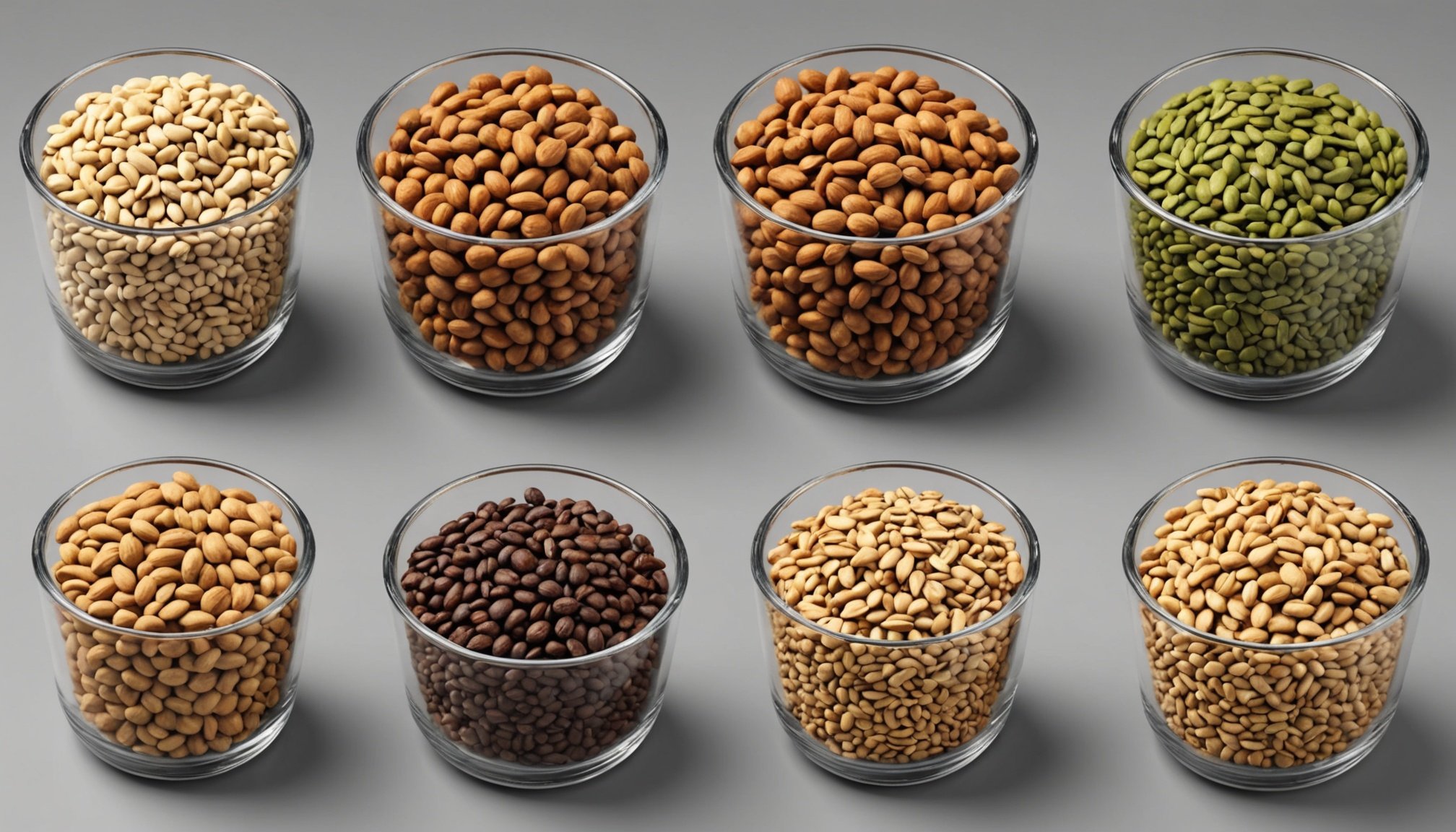Understanding Blender Features for Crushing Nuts and Seeds
When selecting a blender for crushing capabilities, it is crucial to focus on the blender features that will ensure the best performance. A powerful motor is the first feature to consider, as it directly influences the efficiency of crushing nuts and seeds. A motor with at least 1,000 watts is recommended to handle tough ingredients effortlessly.
Blade design is equally important. Blades crafted with high-grade stainless steel and an innovative geometry can significantly enhance a blender’s performance. Look for blenders where the blades are angled and stacked, which increases cutting precision and minimizes stress on the motor.
This might interest you : Delve into the unique flavors of troyes andouillettes
The container material and size also play a pivotal role in optimizing the crushing capabilities. Durable, BPA-free plastic or shatterproof glass containers are advisable as they withstand the force generated during blending. Additionally, a larger container size allows for more movements of the ingredients, leading to more consistent results.
Considering these key features not only guarantees efficient processing of nuts and seeds but also enhances the overall utility of your blender. By evaluating these specifications, you can make a confident, informed decision tailored to your culinary needs.
In the same genre : Unlocking culinary creativity: your ultimate guide to choosing the perfect apron style for every kitchen adventure
Top Blender Models for Crushing Nuts and Seeds
Exploring the vast array of blender models can be daunting. Understanding which models stand out when it comes to crushing nuts and seeds is critical to making the best purchase.
Model Comparison: High-Powered Blenders
High-powered blenders excel at crushing nuts and seeds with ease. These blenders often feature durable blades and powerful motors, ensuring high performance. Notable options include industry-leading brands known for their strong user feedback and excellent performance ratings. Users praise the ability of these models to create a smooth texture in butters and spreads.
Budget-Friendly Options
Affordable alternatives can still pack a punch when it comes to crushing tasks. It is vital to look for robust blades and a powerful yet efficient motor. Product reviews suggest that many budget models offer reliability. Testimonials often mention their ease of use and satisfactory outcomes in small batches.
Specialty Blenders for Nuts and Seeds
Certain blenders are designed with nut processing in mind. Equipped with special features, such as tailor-made settings and sturdy components, these specialty blenders offer unique advantages. They are often praised for their efficiency and versatility, though some users note the price as a potential downside compared to general-use blenders.
Practical Tips for Optimal Blending Results
Exploring blending techniques can elevate the quality of your culinary creations. To start, preparing nuts and seeds is crucial. Ensure they are soaked overnight to soften, boosting nutrient absorption and ensuring a smoother blend. This step prevents wear on your blender and achieves a creamier consistency.
Once prepped, understanding the recommended blending settings is essential. For silky purées or soups, begin with a low setting to break down ingredients. Gradually increase to high speed for a smooth, even texture. Thick mixtures, like nut butter or hummus, thrive under consistent medium-high settings with periodic pauses to prevent overheating.
It’s important to avoid common blending mistakes that might impact the end result. Overfilling or using the wrong speed can lead to uneven textures or machine strain. Ensure the lid is secured to prevent spills and start at the lowest speed to maintain control. Consistency in these best practices ensures better outcomes.
User tips suggest starting with smaller batches to test textures and flavors, adjusting as necessary. Adopting these practices makes your blending experience more efficient and enjoyable, ensuring you extract the best flavors and textures from your ingredients.
Recipes That Utilize Blended Nuts and Seeds
Delving into nut and seed recipes can transform your culinary experiences by integrating healthful ingredients into your diet. A staple in these creations are nut butters, which are not only nutritious but also versatile.
Nut Butter Recipes
To craft homemade nut butters, begin with a simple blending process. Choose your preferred nuts—almonds, peanuts, or cashews—and roast them to enhance flavour. This step is crucial for the natural oils to release, facilitating a smoother texture during blending. Utilizing a high-powered blender, process the nuts until they form a creamy paste. Adjust the thickness with natural oils, like coconut or sunflower oil.
For added depth in flavour, experiment by adding spices like cinnamon, or sweeteners such as honey. These variations can create unique spreads for an array of uses.
Seed Milk Making
Seed milks are excellent dairy alternatives. Blending recipes often start with soaking seeds such as hemp, sesame, or sunflower overnight to soften. Drain and blend with fresh water to form milk. Strain using a fine mesh for a smooth finish. These milks can be stored in the refrigerator for up to five days. Ensure to mix well before serving to maintain consistency.
Conclusion and Recommendations
When it comes to choosing the right blender, the market offers a myriad of options. Key products stand out based on performance and versatility, providing excellent starting points for users new to this appliance. However, selecting the right blender hinges on the individual’s specific culinary needs and lifestyle.
-
Assess Your Needs: Determine whether a high-powered blender or a compact personal model best suits your kitchen activities. For crafting smoothies, juices, or soups, prioritising a model with a robust motor and durable blades is advisable.
-
User Guides are Crucial: Before purchasing, study the accompanying user guides to ensure ease of use and maintenance. A user-friendly guide can significantly ease the learning curve, enhancing your blending experience.
-
Explore Product Choices: Consider brands offering warranties and customer support, as they often reflect product reliability. Given the investment, brands with positive feedback are frequently recommended.
-
Purchase and Usage Tips: To maximise your blender’s lifespan, follow care instructions explicitly, avoiding overfilling and overheating. Adequate maintenance, such as regular cleaning, is essential to preserve both functionality and hygiene.
These guidelines will assist in making a well-informed decision tailored to your unique needs.











